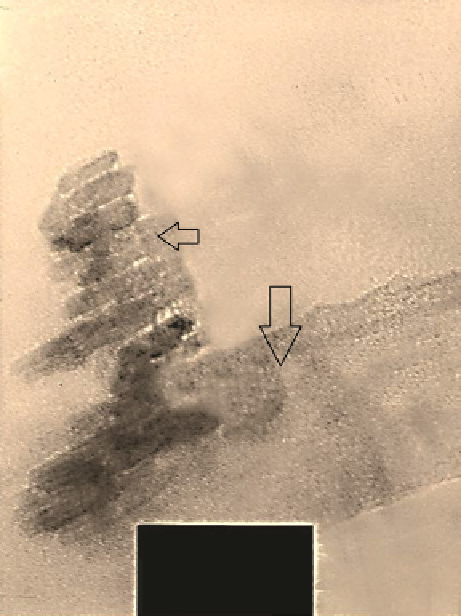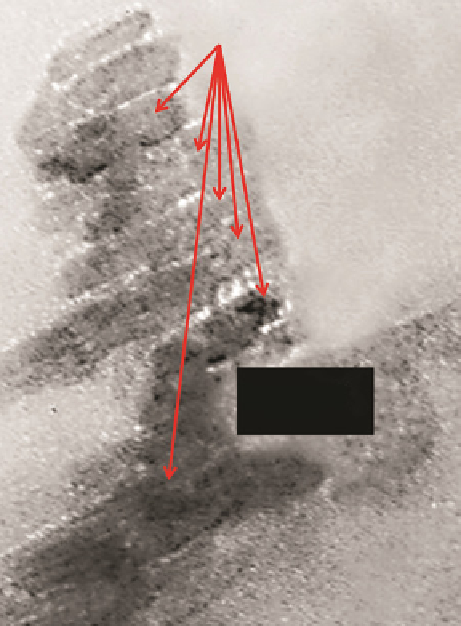Environmental Engineering Reference
In-Depth Information
(b)
(a)
Layered manganese oxide
Mn oxide
BSA
20 nm
BSA
20 nm
figure 25.3
(a and b) The manganese oxide prepared in the presence of BSa. Scale bars for TeM images are 20 nm. Images (a) and
(b) are reproduced with permission from ref. [24]. © Springer.
redox-active biomimetic cofactors. The chalcogels can be easily functionalized with cationic chromophores, such as
[ru(bpy)
3
]
2+
, enabling photoexcited electron transfer from dye to cluster. The biomimetic chalcogels are fully stable in
aqueous solutions under illumination for at least 3 weeks, which contrasts greatly with the water-unstable molecular
[Mo
2
Fe
6
S
8
]-based clusters [47].
More interestingly, in many cases, mechanisms of these related reactions (Table 25.1) with only inorganic (nano)particles,
such as metal oxides or sulfides, and enzymes could be very similar (Scheme 25.3) [58]. In conclusion, it is worth pointing out
that in some cases the metal oxides or sulfides, which are considered as cofactors in enzymes, are efficient and unique catalysts
for related reactions in vitro. These synthetic or natural simple compounds, as minerals, are formed in no special or preorga-
nized precursors [37-39], and in purely aqueous solution usually show structures similar to inorganic cores of enzymes. Such
structures could be formed, changed, and modified by environmental groups (amino acids) in the first enzymes.
It is worth noting that the assembly of inorganic cofactors in these enzymes could also be considered stepwise mineraliza-
tion [59]. as an example, a proposed assembly of the WOC in Photosystem II is shown in Figure 25.5 [59]. The biosynthesis of
the FeMo cofactor could also be considered complex biomineralization (Fig. 25.5) [60].
Both enzymes and related metal oxides and sulfides that we discussed catalyze multielectron transfer reactions and,
therefore, it is necessary to find theoretical concepts for multielectron transfer reactions. For these reactions, the overall
electron transfer is essentially self-organized or concerted, and individual electron transfer steps are related to each other;
therefore, the set of corresponding equations can be reduced to a single one, which then reflects improved, multistep,
electron transfer. The theoretical formalism for such an approach has been discussed by Tributsch and Pohlmann [61]. In
multielectron reactions, high-energy intermediate states disappear and the entire multistep electron transfer reaction can
be described with one single kinetic equation [61]; in addition, an important property of catalysts is that the first electron
transfer for the catalysts facilitates the transfer of the second electron. Then, this transfer facilitates the transfer of the
third, and the transfer of the fourth electron, or even further electrons usually by triggering a molecular change.




